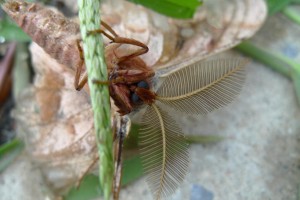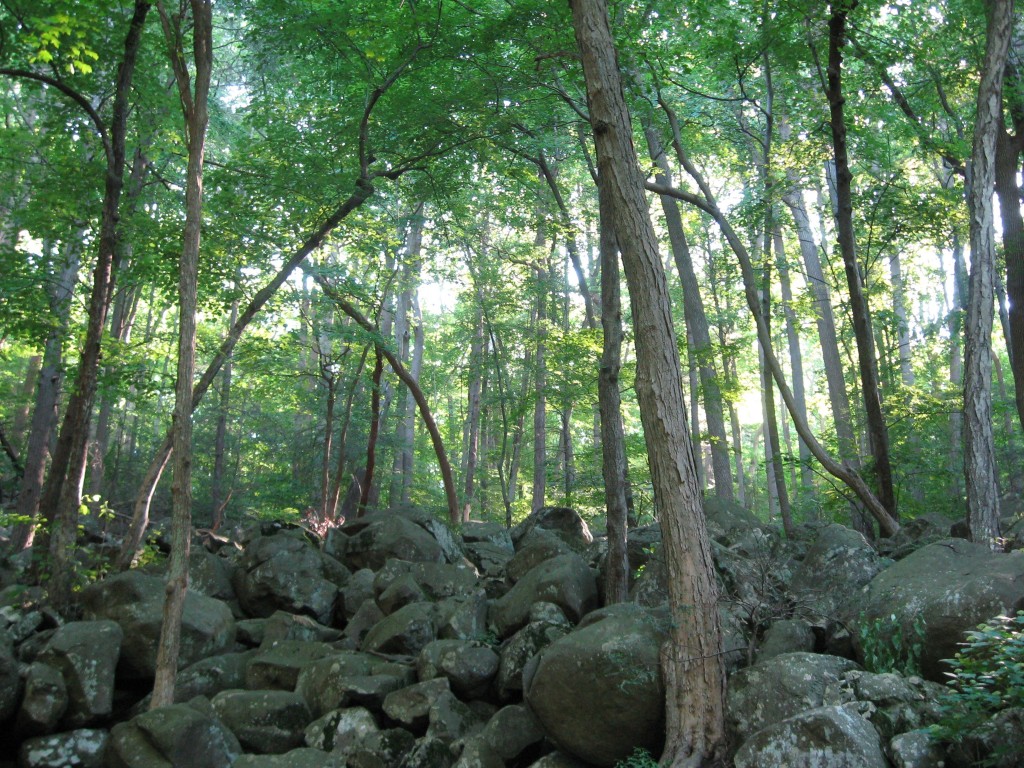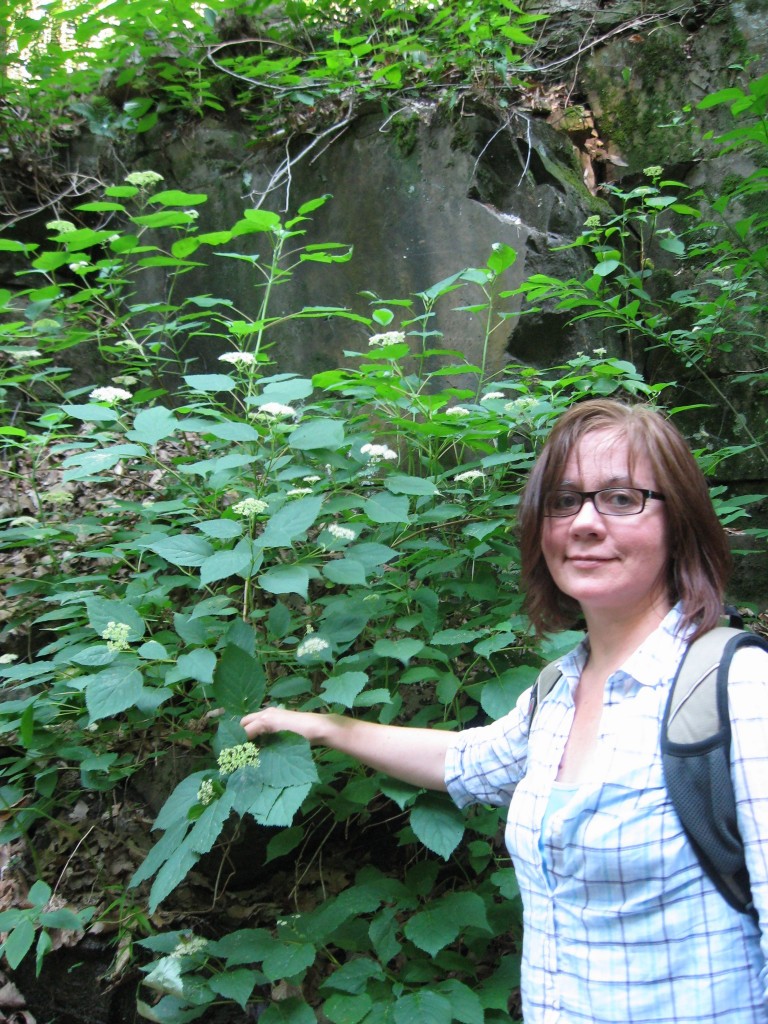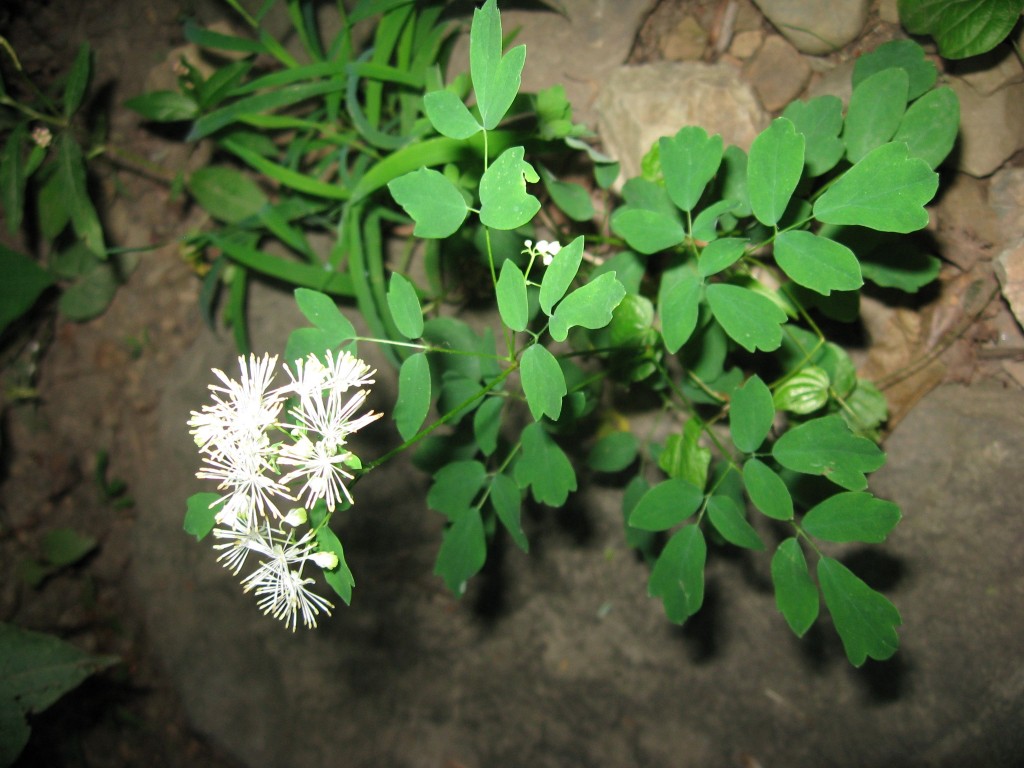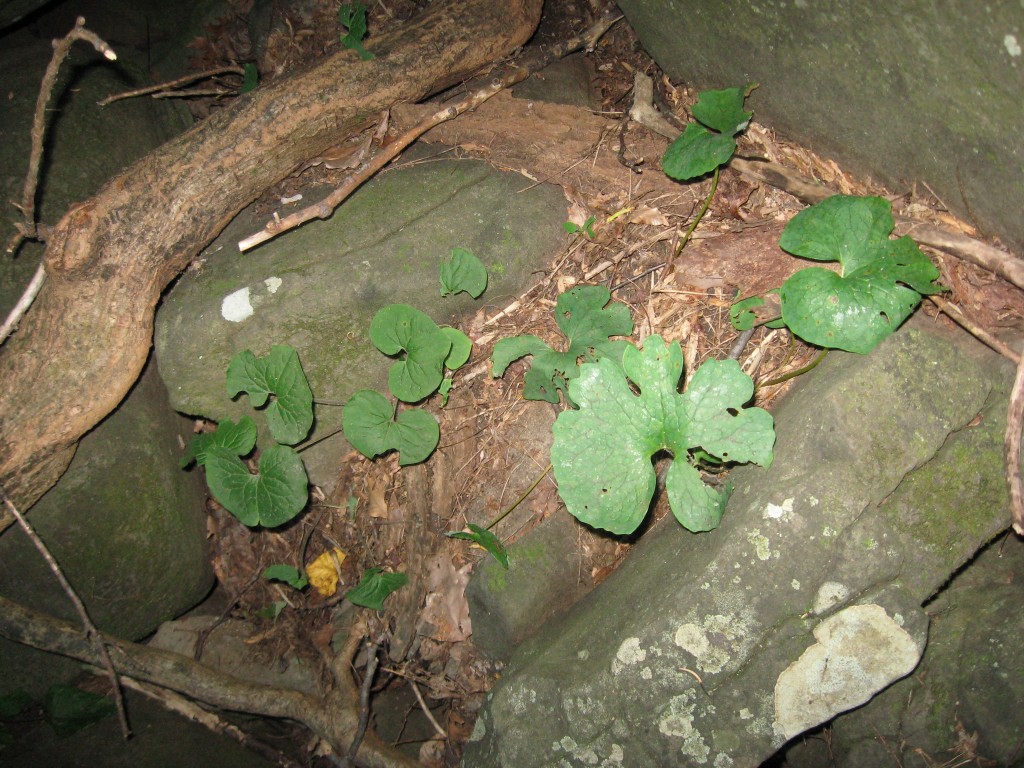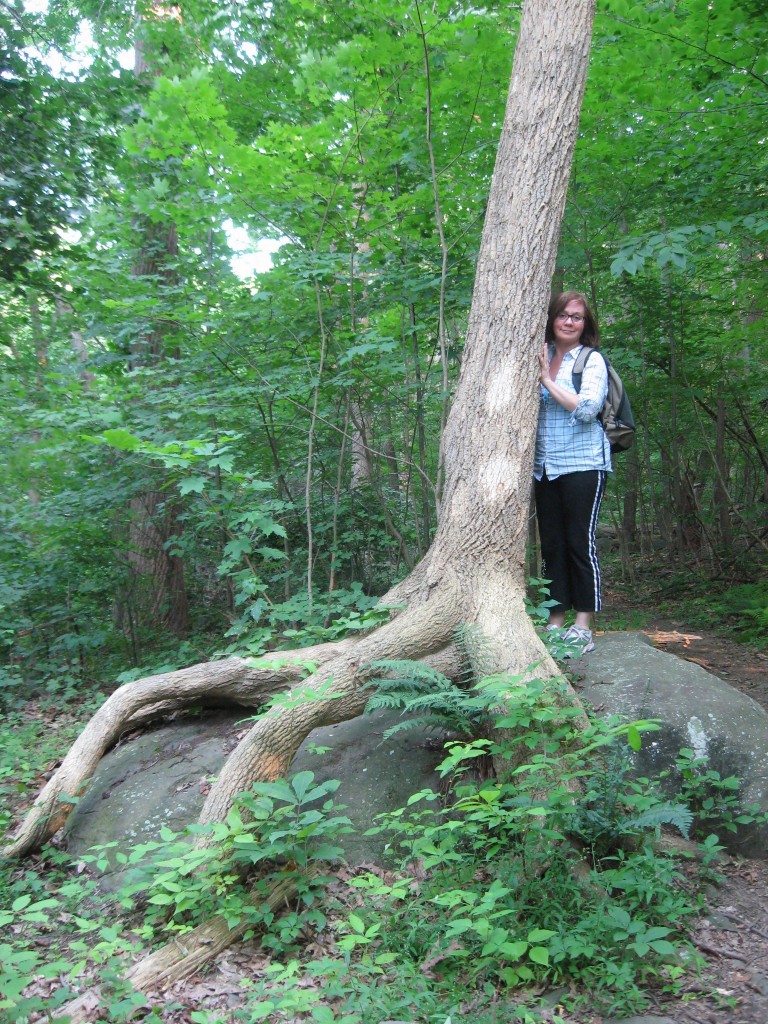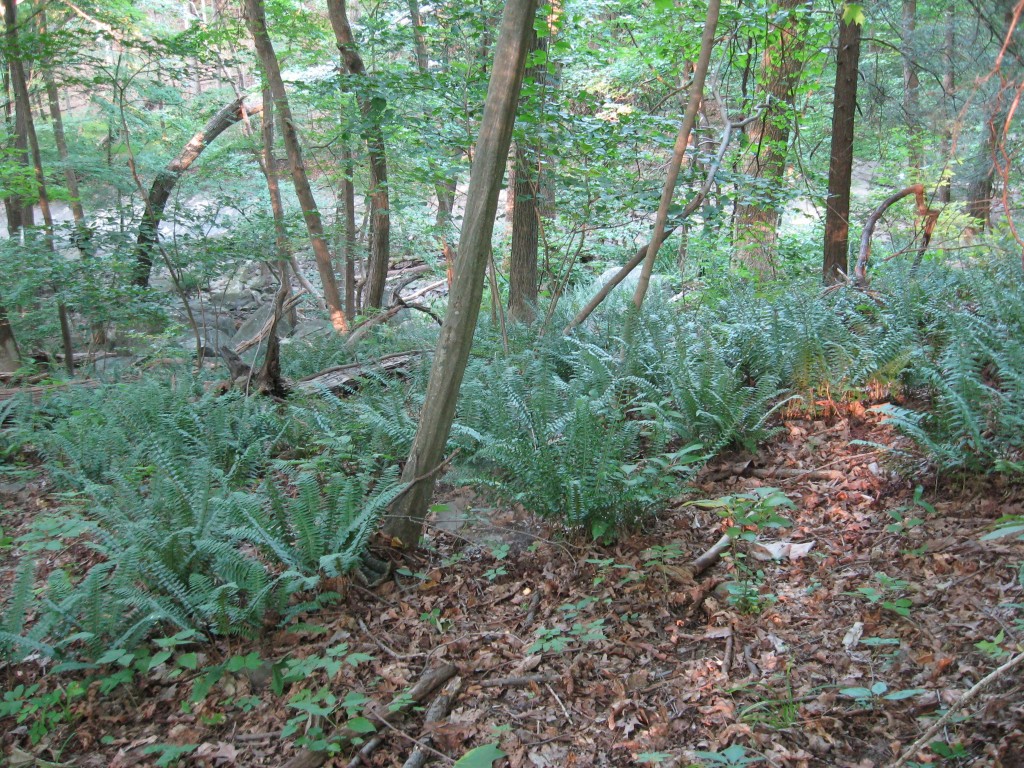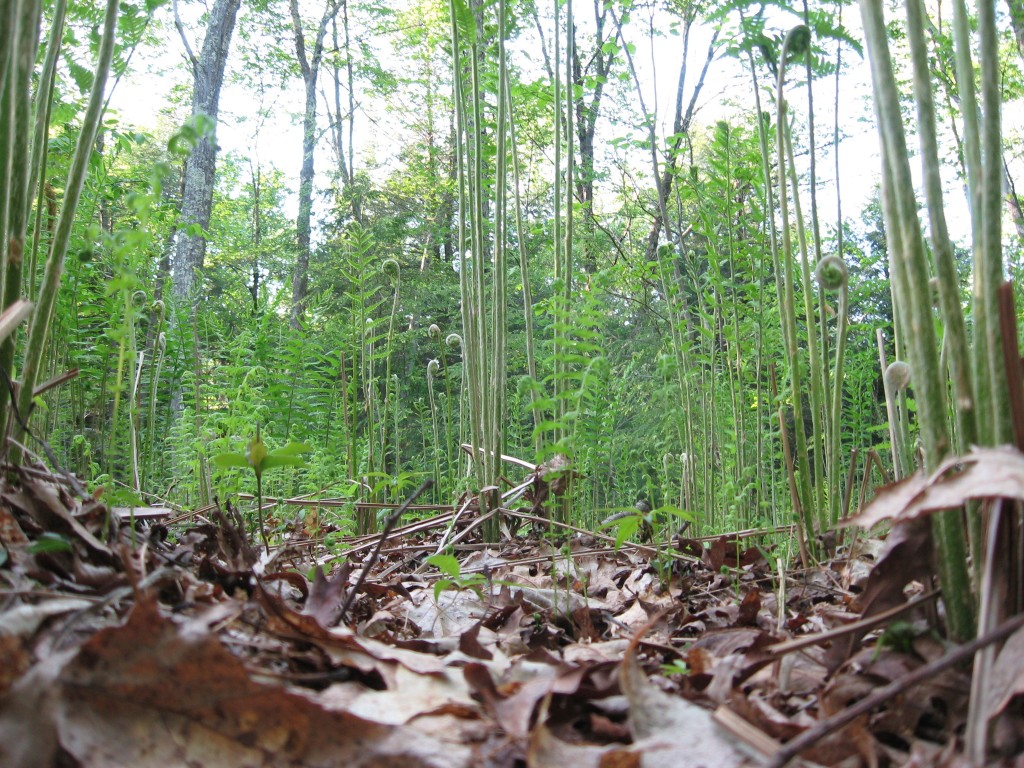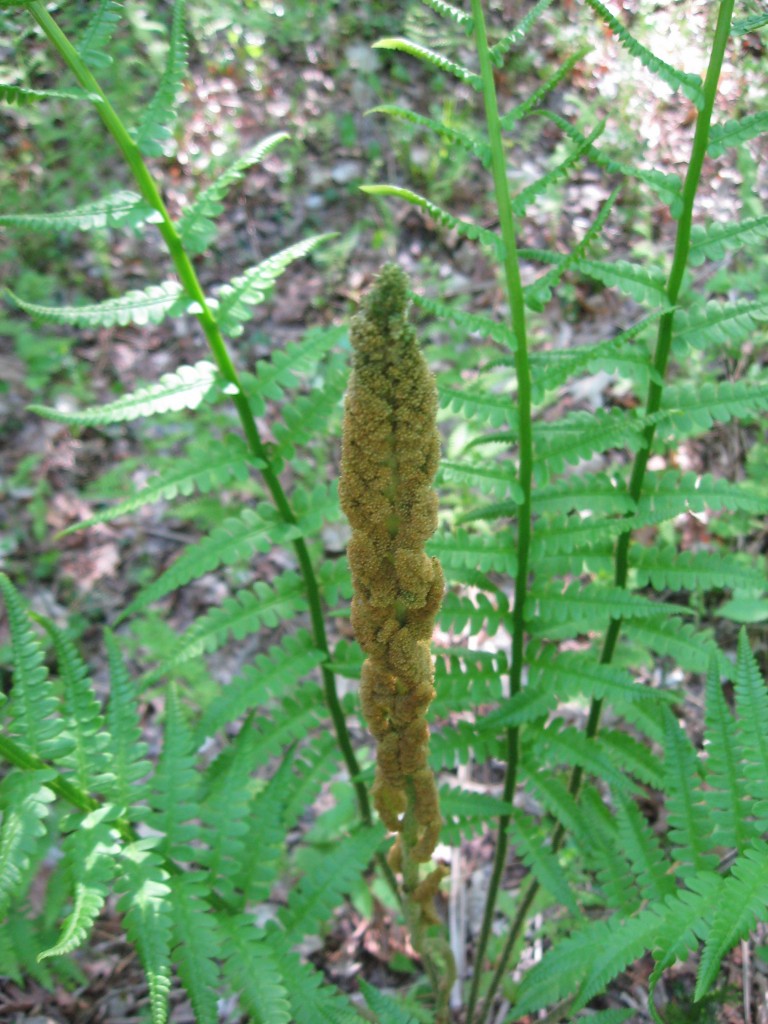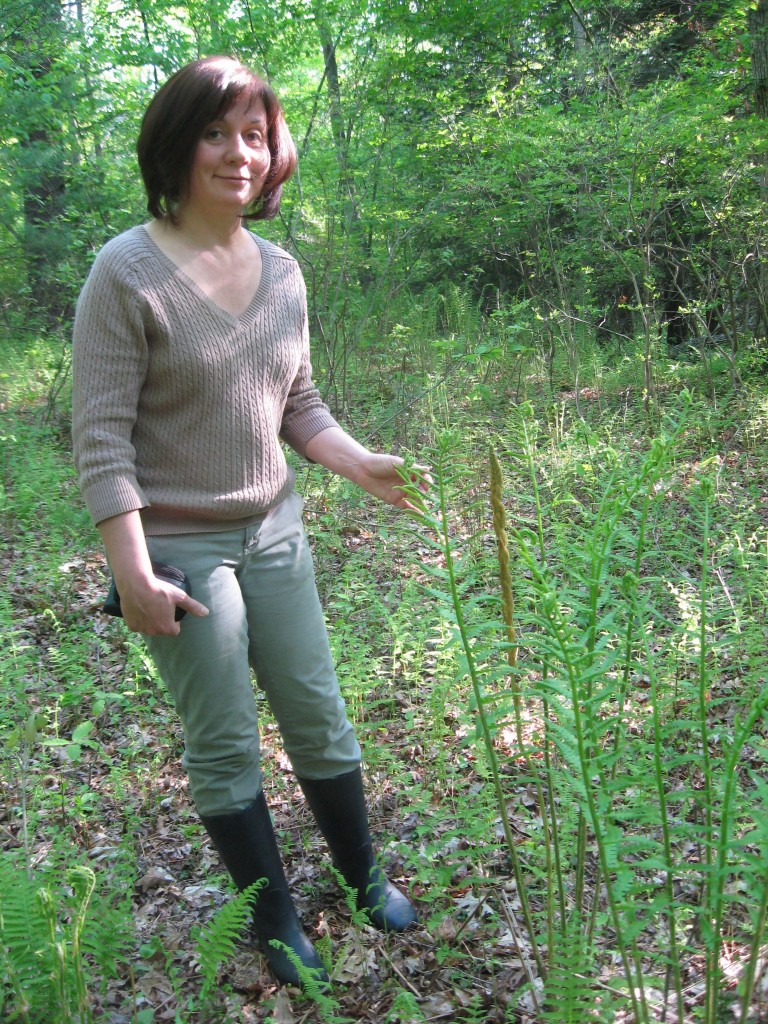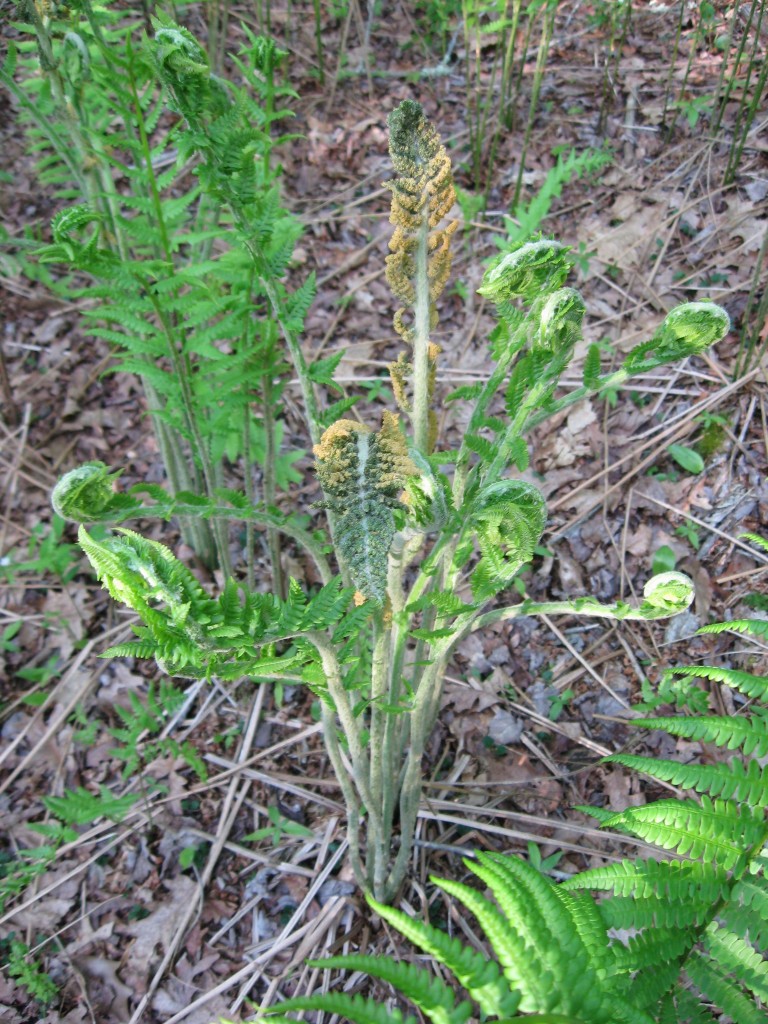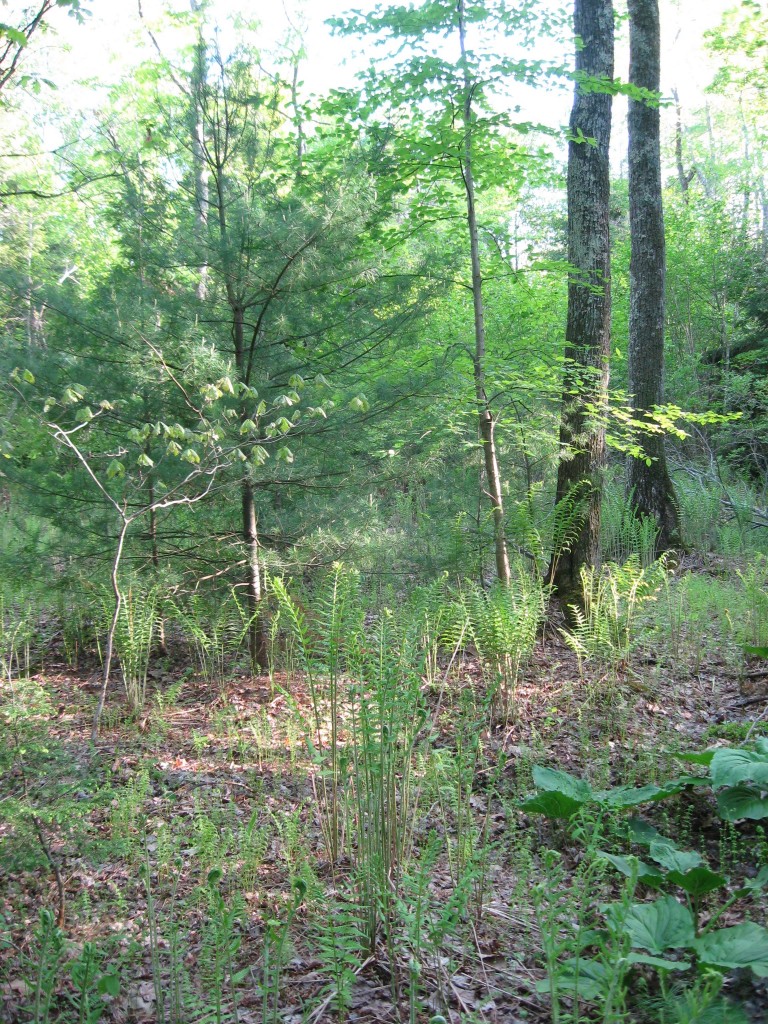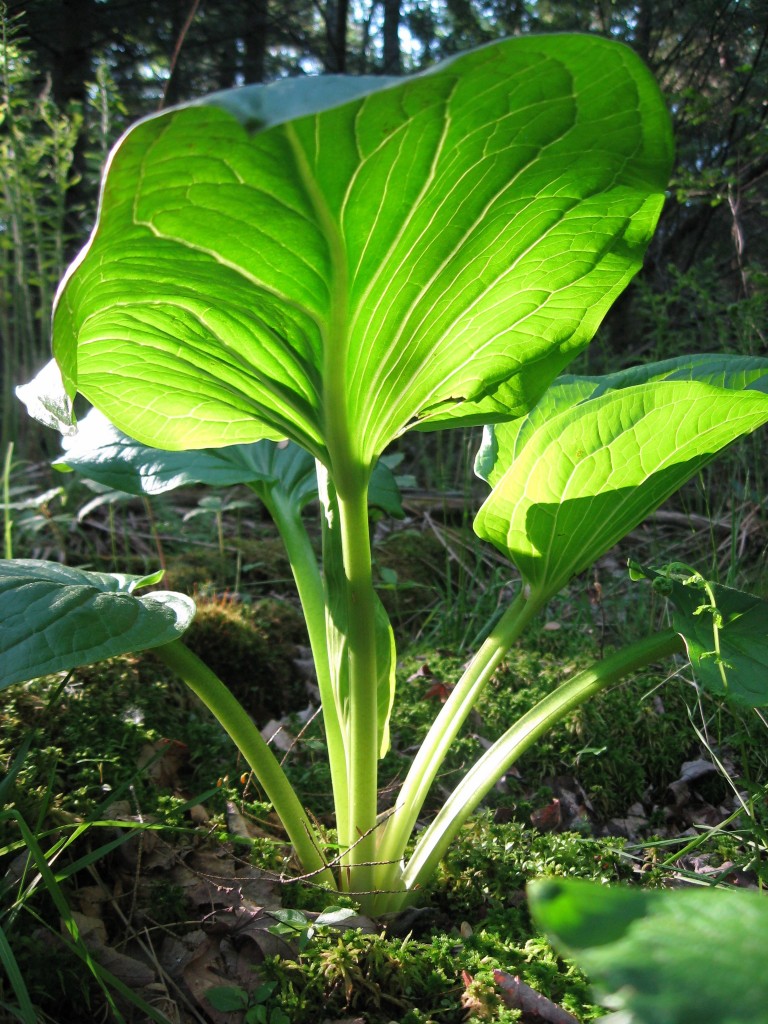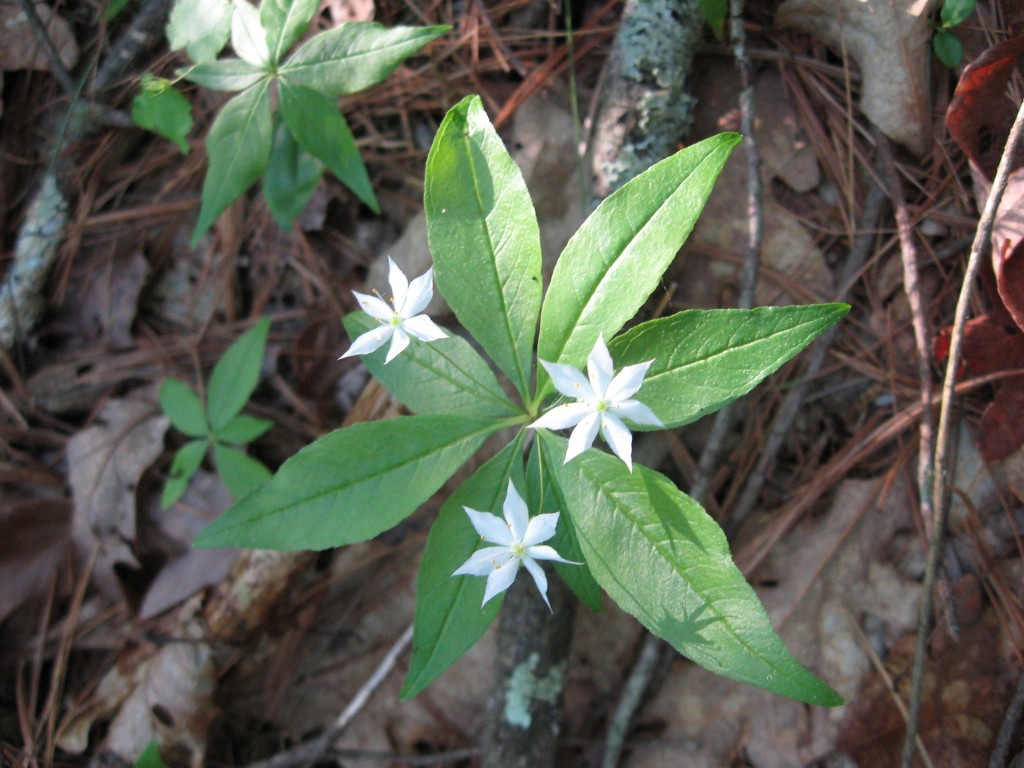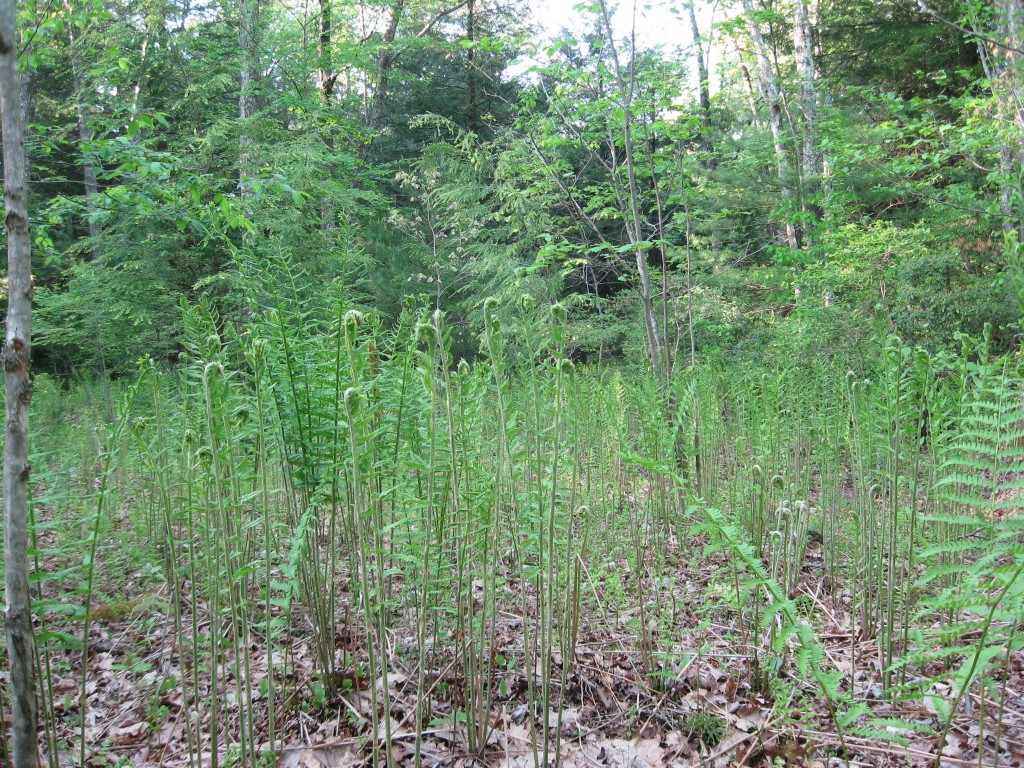All day was spent riding SEPTA around the City Of Philadelphia. Past neighborhoods and factories, many of them in various states of decay. Still beautiful, like this Polyphemus moth in its final moments at the Chestnut Hill West SEPTA station.
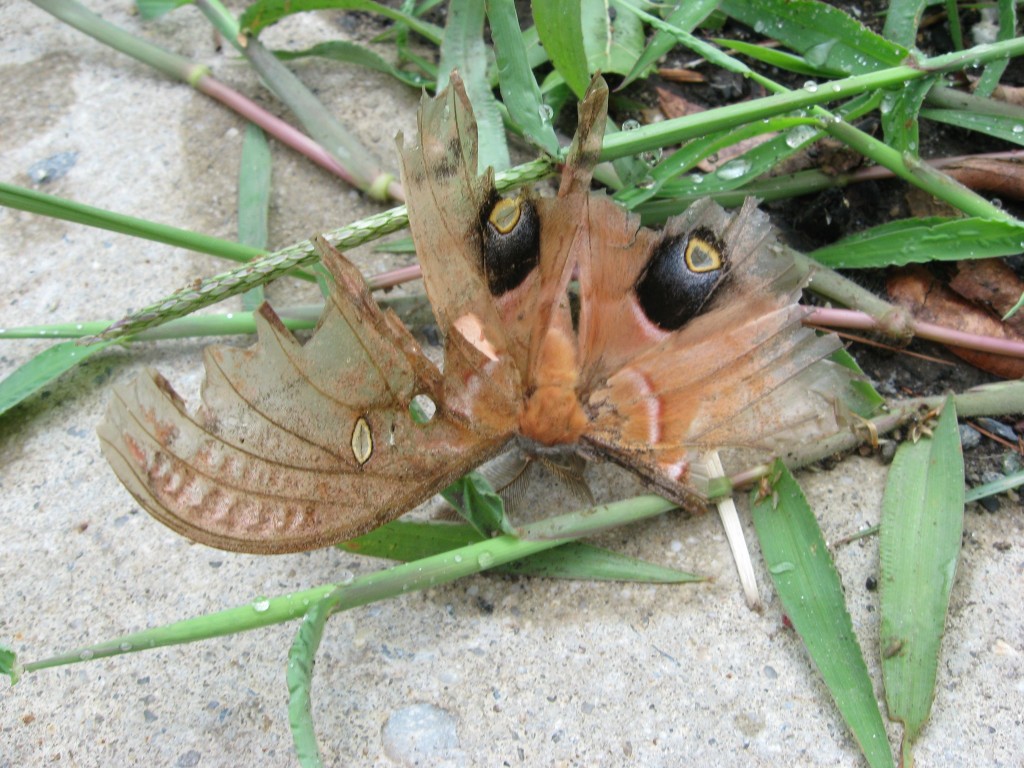
It was still alive and fluttering among the weeds. Had never seen one before. This is a memorable moth!
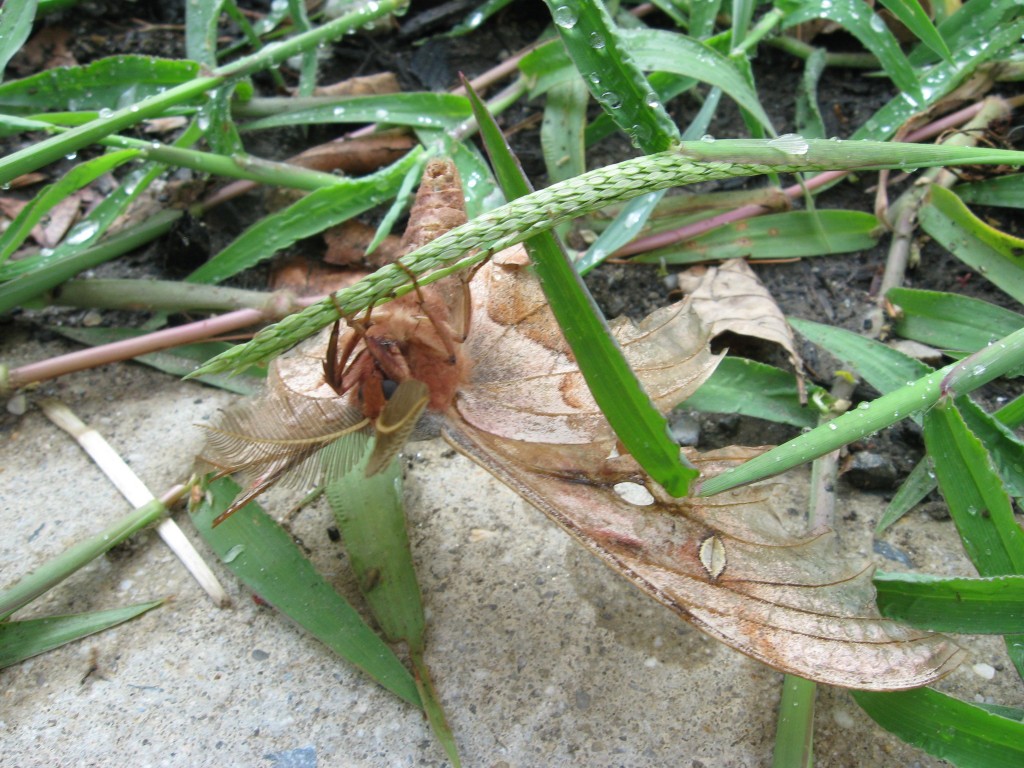
This moth has seen better days. It still has all of the elements retained to just imagine what it was like. Its delicate wings are reminiscent of the flower petals of the Hibiscus moschutoes, the Rose Mallow, a  large six inch wide flower that is currently blooming in our area, which lasts only one day, sometimes two. The Polyphemus mothalso breaks ground in its size, reaching four inches in its span. The fleeting flower of the Rose mallow, like the Polyphemus moth, is a stunning display of size and color in the middle of the summer.
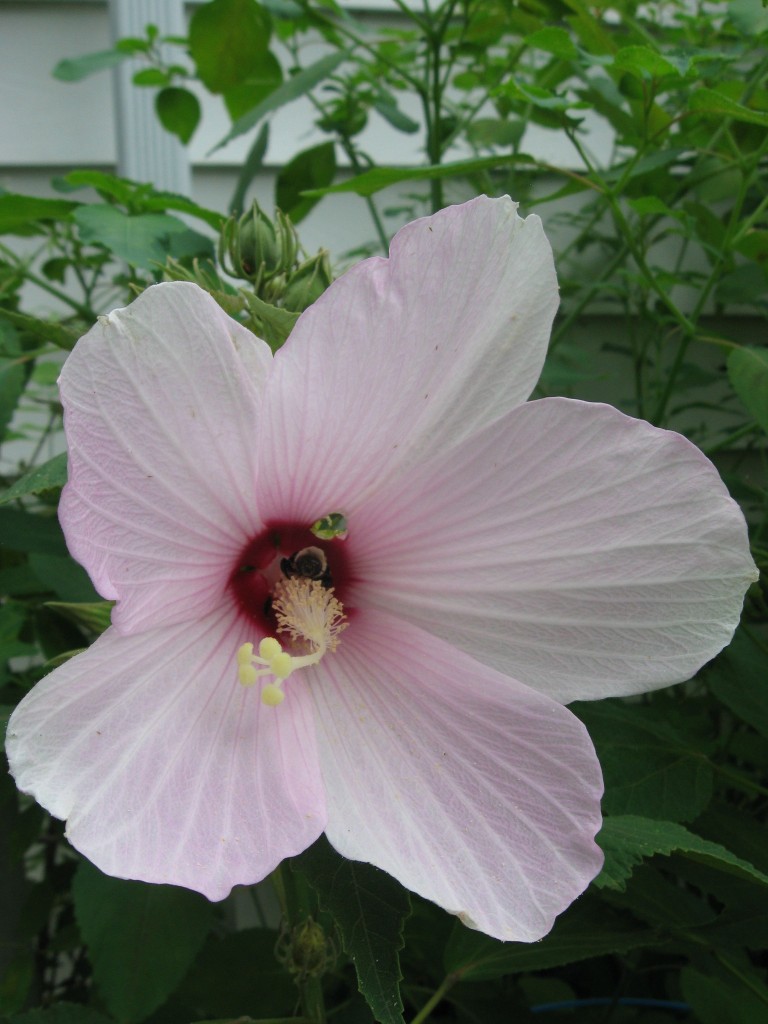
One day, the Polyphemus moth in its peak will find its way to these pages full of flowers. The Hibiscus Moscheutos can be found in the sunny watery habitats in and around the City of Philadelphia. The ephemeral flowers drop to the ground in a withered state, like the Polyphemus moth yet still remaining a picture of beauty.
The flowers in our garden have lived a day-long life full of visits by pollinating bees.
In just a few days, what was once a magnificent flower will have decayed and returned to the soil of the earth.
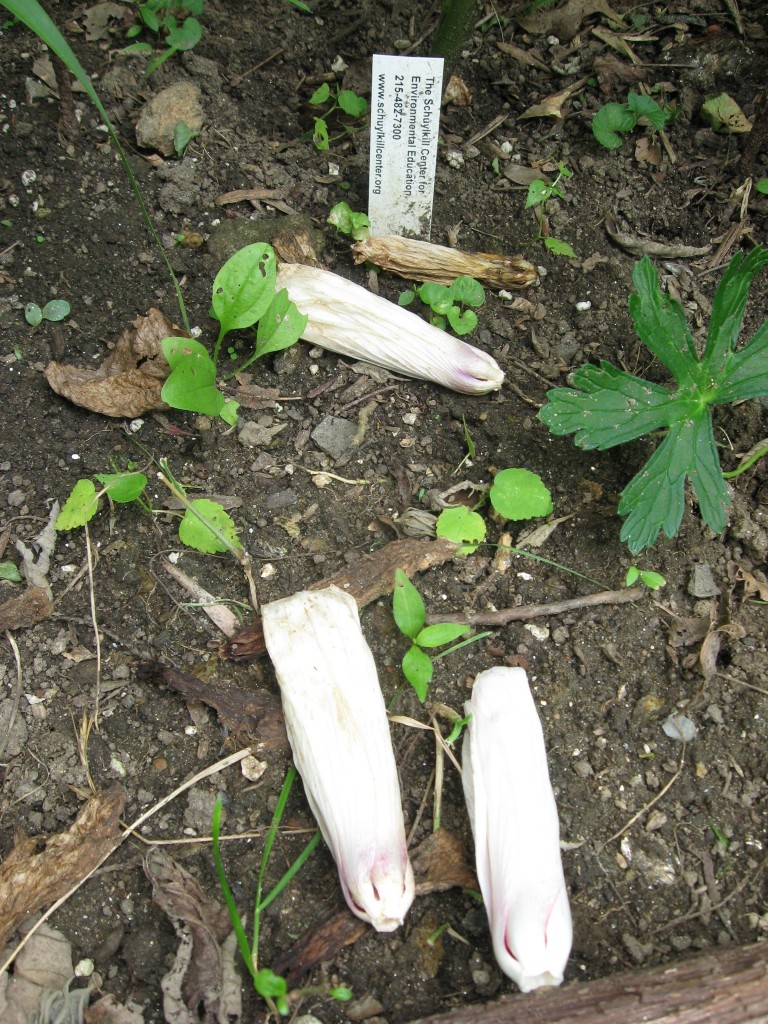
We return to thoughts of our fair city and the state of our own habitat:

The City Of Philadelphia has many blocks of buildings in their final moments. Unlike the Polyphemus moth, these individual specimens could be saved and revitalized.
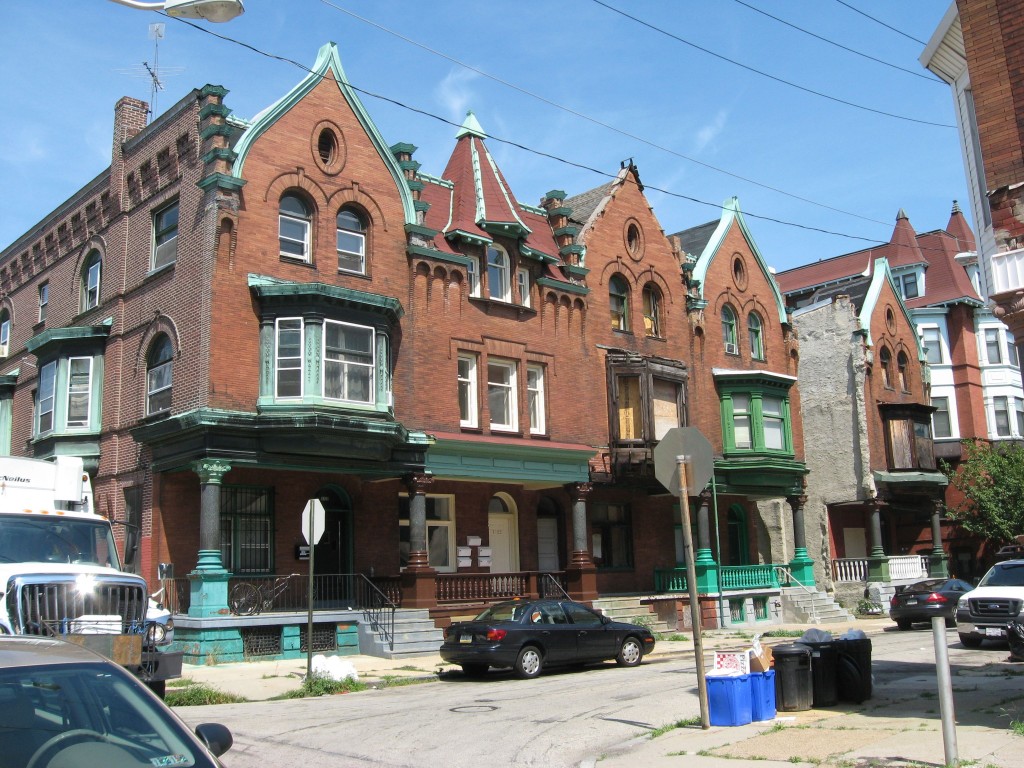
This West Philadelphia block, around the corner from our Parkside office, has suffered decay for many years, and it still has 2 blighted properties and a vacant lot on the row. Â However, in just the past year, the second house from the left has been redeveloped by an investor, and because of the local historic designation of the neighborhood, the facade was restored in a sensible manner, as required by law.
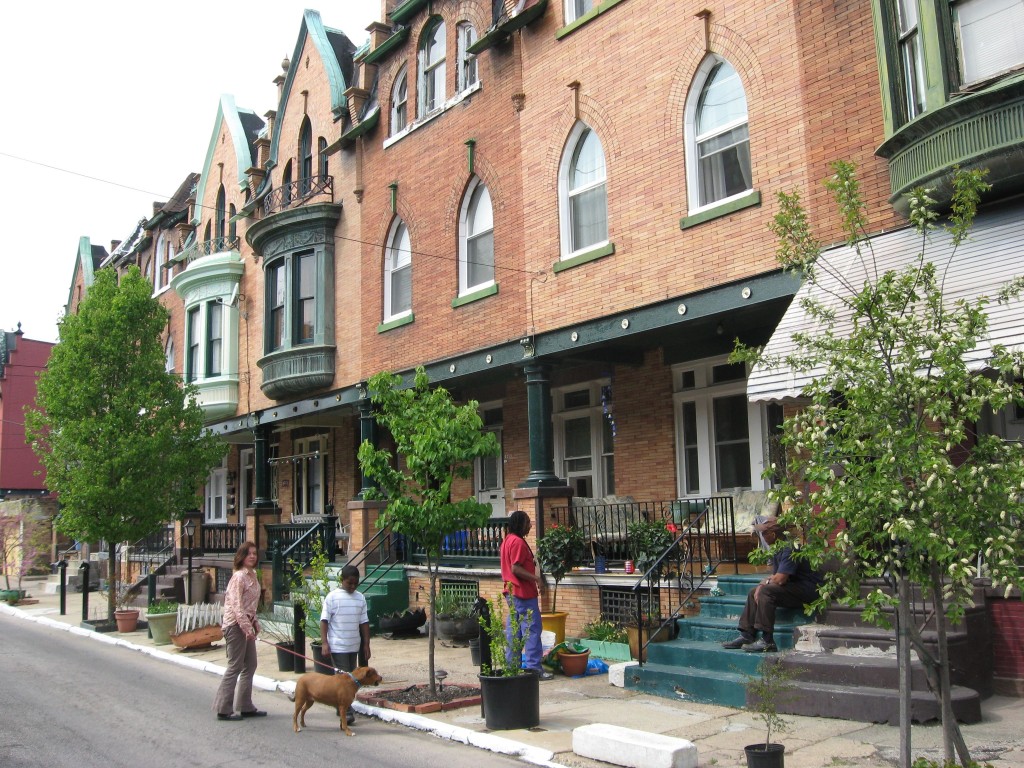
This block has undergone a transformation. The Sanguine Root Parkside property is the 4th house from right, with the unpainted copper trimmings and bay window. This revitalized row of houses, also under the protection of historic status, has been endowed with new trees, and the gracious porches and stoops, freshly painted, enhance  the neighborhood’s street life.  Once blighted, with 2 houses slated for demolition, this row was saved and enhanced, and is now a cheerful and livable neighborhood.
Beauty is often fleeting. Great works of art and architecture often need the protection of an economically (and militarily) powerful state in order to be preserved for the few centuries at the most before the next violent upheaval. Â Usually this is not good enough and if a piece of art is to last even 1000 years it often needs to be buried by the dust and accumulations of society, a hidden tomb, or by a catastrophic event, like Pompeii. The rest is left with us, our collective thoughts and feelings, often expressed emphatically, and also often enough felt and thought personally. Beauty is what is on our minds collectively though, and the natural world is our inspiration, once our earthly needs are met.
Only thin vestiges survive of our appreciation of nature and human society, usually carved in stone or left on a ceramic tile floor, sometimes paintings found in a cave, or in the intricacies of our languages and writing; our cultures survive as things of beauty, they are beatific, collective manifestations that we live in daily and do our best to maintain.
Beauty has become us, we strive for it to continue, and persevere, like nature, like the Polyphemus moth or the trees that grow from the once mowed fields and vacant lots. We look to something broader in scope than ourselves, our individual specimens. The culture is not enough beauty to satisfy our longings and innate comprehension of the universe. Our world has obvious connections that go beyond the collective culture and the societies of states and their need to militarize, subjugate, classify and control.
The fleeting beauty of the natural world has been a constant presence through all of the various societal manifestations. We are becoming aware that we are in fact a species evolving within an ecosystem, just like every other plant, butterfly and moth among us. We have created a language and understanding of spiritual dimensions, which allows us to accept the changes we need to adapt to the nature of the universe. We have also created a language and regimen of observation, which allows us to quantify and evaluate certain sections of the universe, to help us evolve. With these practices, we are collectively developing a curiosity for the beautiful.
The Polyphemus moth , a species older than all of humanity’s various attempts at sustaining beauty, a species that is still found on the thin layer of life on this earth, amidst the constantly changing City Of Philadelphia, still found decaying among the same old Oak Trees and Jewelweed that have been growing in this same spot for millennia, the Polyphemus moth is a species evolved and still surviving, it is a thing of beauty to be beholden by only us humans, who have evolved in our culture the sense of beauty and the sense to cultivate and propagate that sensibility and hopefully pass it on to the willing and interested.
